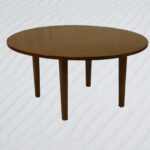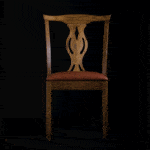Wooden furniture is a timeless and exquisite addition to any interior, offering beauty, warmth, and longevity. Whether you’re a club committee or a professional designer, the allure of wood furniture is undeniable. However, investing in wood furniture requires a deep understanding of the material, craftsmanship, and maintenance to ensure that your pieces stand the test of time. In this guide, we will walk you through the process of buying and maintaining wood furniture, offering valuable insights and tips to help you make the most of your investment.
Understanding Wood Types
The journey to acquiring the perfect wood furniture begins with a thorough understanding of the different wood types available. Each type of wood brings its unique characteristics, from grain patterns to durability. Explore the world of hardwoods like maple, oak, and cherry, known for their resilience, as well as the charm of softer woods with their distinct beauty. Custom furniture manufacturers can help you select the best wood for your project.
Craftsmanship Matters
Craftsmanship plays a pivotal role in the quality and longevity of your wood furniture. Delve into the intricacies of construction, examining the types of joints used in furniture assembly, such as the renowned Eustis Joint, which stands as a testament to strength and stability. Discover the significance of protective finishes that safeguard your pieces from the rigors of everyday use. And don’t forget to test for stability, ensuring your chosen furniture stands firm and wobble-free.
Choosing the Right Maker
Selecting the right furniture maker is a decision that can significantly impact the quality of your investment. Consider renowned manufacturers like Eustis Chair, celebrated for their commitment to creating high-quality, enduring wood furniture. Explore our gallery of past installations. Look for a maker who offers a substantial warranty, ideally a minimum of 10 years, to instill confidence in the durability of your investment.
Care and Maintenance
Buying wood furniture is just the beginning of your journey. To ensure your pieces maintain their beauty and functionality for years to come, proper care and maintenance are essential. Learn how to clean your furniture with a soft cloth and mild, non-abrasive cleaner, while avoiding harsh chemicals that can harm the finish. Discover how to protect your furniture from direct sunlight and excessive heat sources, as these factors can lead to warping.
Caring for and maintaining wood furniture is essential to ensure its longevity and retain its beauty.
Here are 10 ways to effectively care for your wood furniture:
Dust Regularly: Use a soft, lint-free cloth or a microfiber duster to remove dust and dirt from the surface of your wood furniture. Regular dusting prevents the accumulation of particles that can scratch the finish.
Avoid Direct Sunlight: Protect your wood furniture from prolonged exposure to direct sunlight, which can lead to fading, drying, and warping. Use curtains, blinds, or UV-protective coatings on windows to minimize sun damage.
Use Coasters and Placemats: Place coasters or placemats under glasses, cups, and hot dishes to prevent water rings and heat damage on the wood surface. These can also help protect against spills and stains.
Clean Spills Promptly: If a spill occurs, blot it immediately with a clean, dry cloth to prevent the liquid from penetrating the wood or finish. Avoid rubbing, as this can spread the spill and damage the surface.
Use Furniture Polish Sparingly: While some furniture polishes can add shine, use them sparingly to avoid buildup.
Avoid Harsh Chemicals: Refrain from using abrasive or chemical cleaners on wood furniture, as they can damage the finish. Stick to mild, non-abrasive cleaners and follow the manufacturer’s recommendations.
Maintain Humidity Levels: Wood is sensitive to changes in humidity, which can lead to cracking and warping. Use a humidifier in dry environments and a dehumidifier in excessively humid spaces to maintain a stable moisture level.
Rotate and Rearrange: Periodically rotate and rearrange your furniture to distribute wear and sunlight exposure evenly. This prevents specific areas from becoming more worn or discolored than others.
Felt Pads and Floor Protectors: Attach felt pads to the bottom of furniture legs to prevent scratching on floors and to make moving furniture easier. Be sure to replace these pads when they wear out.
Inspect for Damage: Regularly inspect your wood furniture for any signs of damage, such as loose joints, scratches, or dents. Address issues promptly to prevent further deterioration and maintain the integrity of the piece.
By following these ten tips for caring for your wood furniture, you can enjoy its timeless beauty and functionality for many years to come. Proper maintenance will help preserve your investment and ensure that your wood furniture remains a cherished part of your space.
A Timeless Investment
In conclusion, wood furniture is not just a purchase; it’s an investment in timeless beauty and functionality. This guide has walked you through the essential steps of buying and maintaining wood furniture, from understanding wood types to selecting the right maker and taking care of your investment. With the right knowledge and proper care, your wood furniture will continue to grace your living spaces with its enduring charm for years to come. So, embark on your wood furniture journey with confidence, and let the warmth and beauty of wood enrich your life.

































